I like my Burris Fast Fire III on my Glock 20. It is a very nice electronic dot sight.
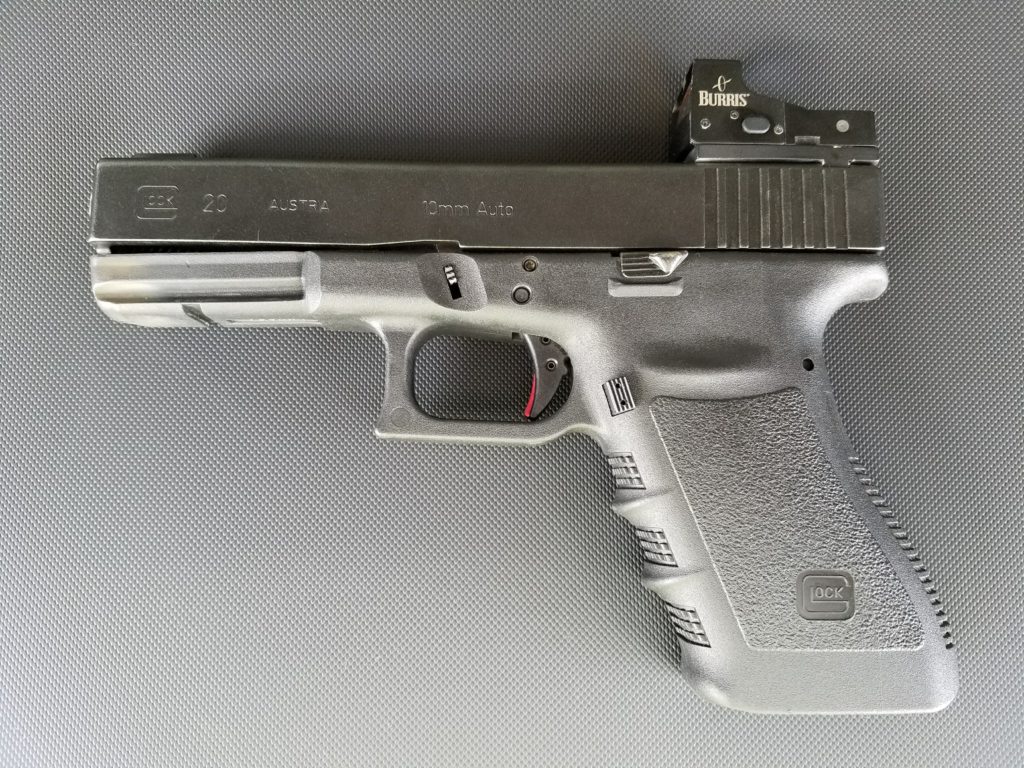
In my opinion, however, there are three specific issues that most, or really all, red dot sights suffer from.
First, they require power, which means a battery. Batteries run down and I have also seen that, fairly often, the battery seems to be prone to part company the sight under recoil. I have recovered the cover and battery from my Burris and just last night, a shooter in a local IDPA match lost his, maybe 5-6 shots into the last stage of the night. I am certain there is some degree of user error involved; there certainly was with mine. Design plays a role, driven by the need for a battery to be there at all as well as needing to be replaceable.
Tied closely to needing a battery is needing a power switch. You have to turn it on to use it and remember to turn it off when you’re done, or it needs to have added complexity to try to do this for you automatically. If the system uses some sort of sensor, then even when “off”, the unit likely draws some miniscule amount of power from the battery.
Finally, they tend to be kinda clunky, even the sleek ones. Even if a pistol is designed for one, function follows form and they necessarily need to sit on the top of the pistol like a frog on a log. Even if you like this look, and I kinda do, the extension of this issue is that the visual axis is farther offset from the bore axis than with plain ol’ open sights on the same pistol and even more so if the pistol was not specifically designed or modified to have such a sight installed.
Since it really isn’t the sight’s fault, the Honorable Mention green ribbon goes to the double edged sword issue of the user’s own eyesight. If, like me, you are fairly profoundly nearsighted, one of the common prescriptions for corrective lenses is to split the corrective powers so that each eye can specialize on near or distant vision. Typically, your dominant eye is elected to see nearby where details are important and the dot, which is optically at infinity, is thus rendered as a blur. In my particular case, it is not only a blur that also appears larger than the entire target, but it’s also not even a nice regular blurry spot but a jagged starburst. It looks as much like fireworks as anything else.

Ironically, this prescription arrangement works well for open sights because the all-critical front sight is in focus and the non-dominant eye can see downrange. This is at least an addressable issue for me and IDPA/USPSA competition because I can just swap contact lenses and thus roles, letting my dominant eye see in the distance where the dot is. I have the same sort of issue with my Vortex rifle sights and really pretty much any optical sight, camera viewfinder, etc, though the illuminated dot is the worst.
Enter the SeeAll sight.
The SeeAll sights eliminate the power and/or switching requirements. The compact design also helps with the offset between the visual and bore axes. It does nothing specifically for my nearsighted visual issues, but the problem arguably less severe since the reticle not a tiny illuminated point.
The sight works very simply, really more of an optical interpretation of open sights. Align the reticle with the target just like putting the front sight and rear notch or the red dot on the target and shoot.
When I decided to get one, it was right after SeeAll started a Facebook advertising blitz. I don’t know if that was the cause, but when I wanted to order, the pistol models were all backordered. The $99 standard version was backordered two months until March 1st and the $199 tritium backlight version was only backordered only one month, until February 1st. Even though I will use this primarily for competition and essentially always in reasonably good lighting, I was kinda forced to buy the the more expensive version in order to have it in hand sooner. I chose the triangle reticle assuming that would be easier for my compromised vision to find. They also make it with a crosshair reticle.
True to their word, is was shipped promptly when expected, actually a couple of days earlier. It arrived in simple but well made packaging and I had it installed in minutes.
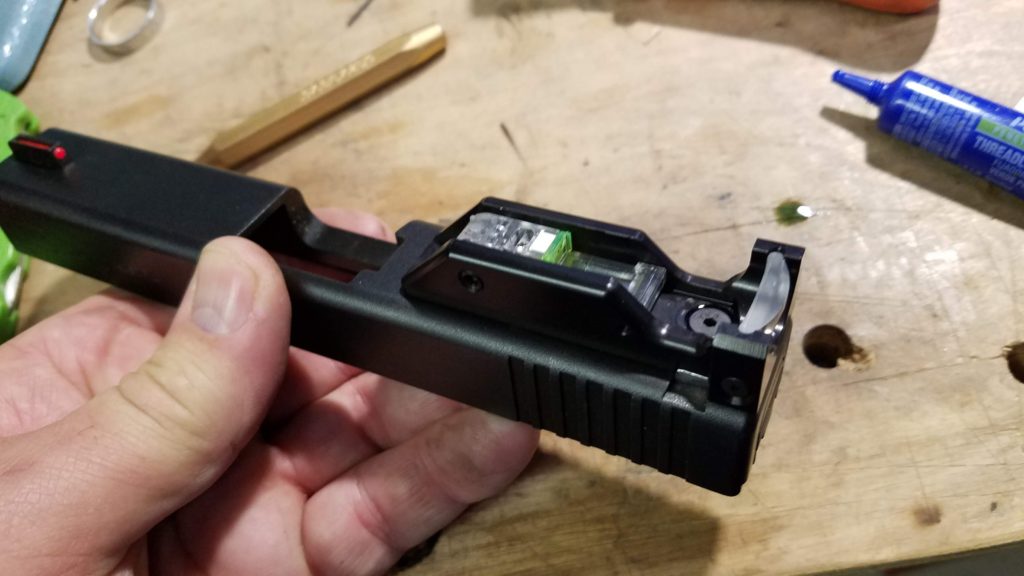
It works very simply. There is a tiny printed reticle on the top of the sight and a lens at the back that magnifies the image of the reticle. You can also just see the tritium tube inside the white cutout area behind the triangle.
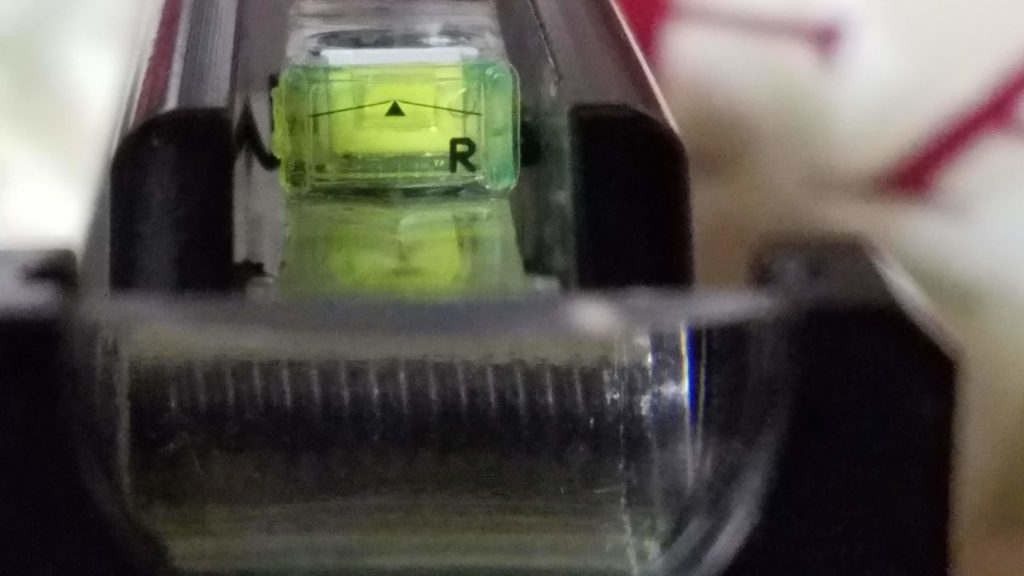
In my personal opinion, the tritium light is not bright enough to be seen except in conditions that are dark enough that you probably can’t see what you are aiming at. To me, the difference is not worth really the doubled price. Your mileage and use case may vary.
The next day, I took it to the range for for sighting in. For the first time *ever*, I had a new sight that needed no sighting in. It was dead on point of aim as it. I still have not touched it.

I have an installation caveat that might just be something that would happen only to me. The night after the range trip, I was cleaning and oiling the pistol for a match the next day, the SeeAll’s first trip to a match. I noted that around the screw that attaches the sight to the dovetail, there was a film of liquid, presumed to be oil. It’s tight in there, so I elected to just use air to blow it out. After that, I noticed that the oil was all over the lens and thought, “Ah, next time dig out a swab.” and cleaned the lens. Well, attempted to clean the lens. Turns out that the fluid was green Loctite that had not set in OVER 24 HOURS. It set wonderfully once it was all over the lens. It was a mess, like looking through a dirty windshield. After much hand wringing, I found that denatured alcohol cleaned it well enough to return it to functional status.
In use, I find the SeeAll to be at least as fast to acquire as a red dot and easy to shoot. In the first match out with it, I shot reasonably well and where I didn’t, it wasn’t the sight’s fault. As it was an outdoor match, the green and black reticle was brilliantly visible. In the first indoor local IDPA match I used it, I was only 3 down in 4 stages. I was perhaps not as fast as I may have been otherwise, but I’m not really super fast. Not yet anyway.
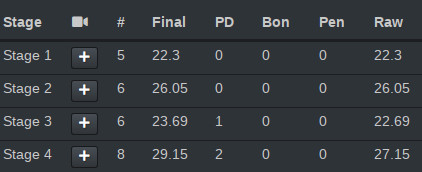
There were a couple of slightly dimmer areas in the indoor range that made it slightly little more difficult to locate the reticle. Active lighting is not all bad.
The one major detraction is that it has some sharp edges on it.
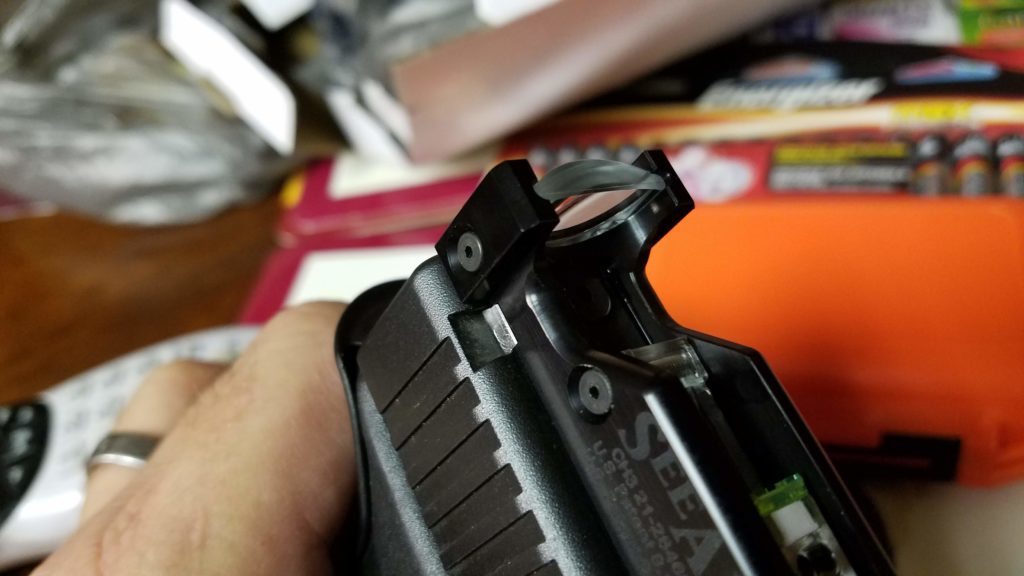
This edge, really a corner, is placed so that you are likely to scrape across it while operating the slide, especially in a rapid manner such as clearing a malfunction. It was harsh on the range trip to sight it in and it drew blood the first time out for a (non-IDPA) match. I went directly to the workshop when I got home and filed the most dangerous edges down.
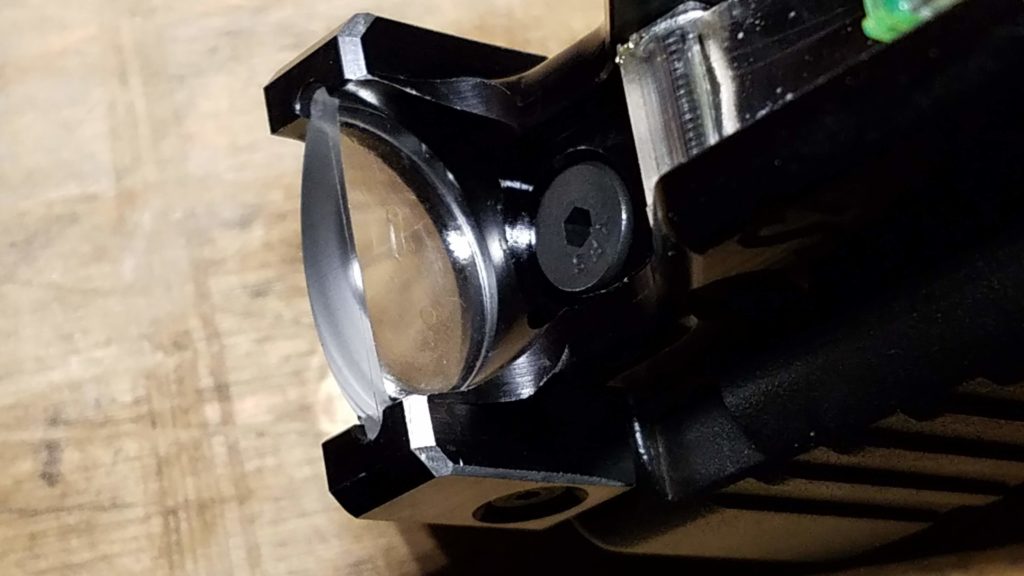
This is somewhat better, though in the aforementioned IDPA match with it, this softer edge caused a blood blister in the same as-yet-not-fully-healed spot where the previous outing had cut my thumb. In a match last night, I kept all my blood and skin. Once the initial injury fully healed and after filing the edges, it may not be a big deal.
I note also that some of the SeeAll sights are not made exactly like this one. They may yet be experimenting with details and for the short term, the edge might be a side effect of another improvement.
So, is it a really cheap optical sight, in the same vein as a Burris or Vortex red dot, or is it just a funky new design for open sights? Should that matter? It was fun to studiously avoid the advice of a helpful SO who reminded me to be sure the optic was switched on for the first stage.
In any case, the proof may lay in how I classify with it at an upcoming classifier match in a couple of weeks and again how I place in a special IDPA Tier 3 CO/PCC match my club is hosting in June 2019.
I will measure the offset between open sights, SeeAll and Burris at some point, probably utilizing another slide I have because I don’t want to remove the SeeAll to do so.
Good report and thanks for the info. I’m not buying one right now but this blog information is great in helping to make a decision.
Very nice writeup Sluggy.
I scoured the Internet for a force gauge capable of measuring a Glock captive recoil spring assembly. The only thing I found was your blog. Your blog inspired me to assemble the attached force gauge and test stand (refer to the website link). I 3D-printed the jig that holds the recoil spring assembly. Thank you for the inspiration!
Woohoo! I’m sorry I was slow responding to your post. I happened to have fallen (at a match) and broken my shoulder just a couple days before your comment. Today is the first time I’ve gotten back to managing my poor neglected blog 🙂
Glad I could inspire someone with something useful. I have used my force gauge for a lot of info comparing springs